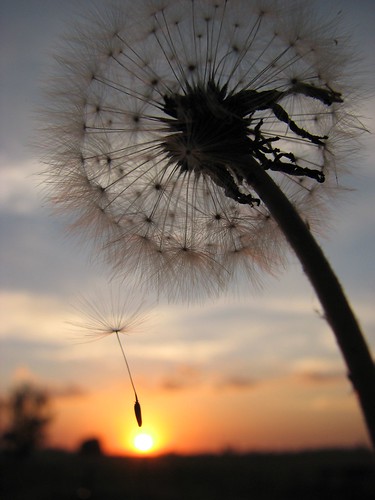
Abandonando el hogar by gonzalo_ar
Everyone knows the dandelion. And everyone knows that the common name dandelion is taken from the French word “dent de lion†meaning lion’s tooth, referring to the coarsely-toothed leaves.The Latin name is Taraxacum officinale.
The flowers at this time of year are quite lovely, but everyone knows the seeds will soon emerge and as soon as they do, dandelion seed will spread everywhere -by the wind, by children blowing the seeds, by animals rubbing against the seed ball or animals and birds. They say that the seed can spread as far as 5 miles from the original site.
The dandelion is not a native of North America and East Asia, but has become an invasive in these parts of the world because it prevents native plants from growing. Dandelions readily colonize disturbed and over-grazed habitats.
